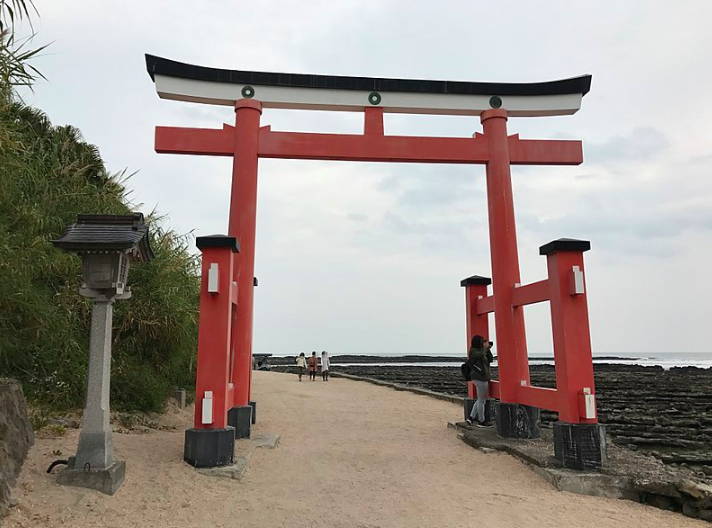A Japanese Scapegoat for Impurity
Brian McGregor (M.Div., Columbia International University) recently Shinto: The Gospel’s Gate, a book that explores Japanese atonement concepts in light of honor and shame.
The Japanese have a particular understanding of sin. The word is 罪 tsumi, which also means crime. So ‘sinner’ is translated as 罪人tsumibito, criminal. Therefore, when a Japanese person is told that they are a sinner, they answer that they are not criminals. Their confusion is made worse when we speak of penal substitution and God’s justice in connection with salvation.
In Shintō thought, tsumi is directly related to kegare, physical and spiritual impurity. In Shintō the world is filled with spirits which must be properly served to avoid their anger and receive their blessing. One of the barriers to receiving blessing is tsumi and kegare. This echoes Jesus’ rebuke to the Pharisees to clean the inside of the cup first (Matt. 23:26). Interestingly, Shintō deals with this kegare through お祓い Oharai.
Oharai is a twice-a-year rite where participants transfer their tsumi and kegare onto a paper doll. This doll has several names – one is 贖物 agamono, which translates as ‘ransom.’ Japanese Shintō scholar Kato Genchi refers to it as an inanimate scapegoat (On Shintō). This word, scapegoat, also appears in Leviticus 16 and the rite of Yom Kippur.

The scapegoat is anointed with the blood of the slain goat and bull and then sent into the wilderness. It is by the sending away of the live goat that the people of Israel are made clean before YHWH. And it is through the work of the agamono that the Japanese are cleansed from their tsumi and kegare.
The parallel between Oharai and Yom Kippur led me to question my understanding of words like atonement, propitiation, sin, salvation, and sanctification. But the hardest word to deal with was the Hebrew term Azazel, which is often glossed ‘scapegoat.’ Many English translations have a footnote next to the word, saying, “Hebrew word of unknown origin, believed to be a demon.”
Azazel is not a demon, it is a name that refers to Jesus, the God Who Bears Our Sin. Hebrews 9:6-28 uses Yom Kippur to describe the atonement through Jesus. The climax of the argument is in 9:23-28. Verse 28a, “so Christ, having been offered once to bear the sins of many” (ESV) must be a reference to the live goat who bore the sins of Israel into the dessert (Lev. 16:22). Thus, scripture itself is using Yom Kippur and the live goat, le Azazel, as a typological prophecy. And I would not have learned this without trying to understand Shintō.
There are scapegoat rituals in cultures throughout the world. Leviticus 16 and Oharai provide a way to explain the gospel in shame-honor language through the lens of spiritual purity and impurity. In your context, look for a scapegoat rite which removes impurity and/or shame. It might take the most surprising form, like a paper doll. But God can use a simple piece of paper to explain the most profound and wonderful story in the world.

As Girls’Day was celebrated March 3rd, I was having similar thoughts about the scapegoat.
Originally the Hina dolls were supposed to be those who would bear away the impurity in a person’s life and so they were sent away downstream on a nearby river. Japanese often have a hard time conceiving of themselves as sinners, partly because of the language associations as you have described. But here we see in Japanese culture an awareness of impurity that needs to be removed – a good connection to be made. That the dolls are made in human form also relates to Jesus coming as one of us to be the sin-bearer.
“sin-bearer” ….remover of impurity, shame, ….. and therefore acceptable, redeemed, honored, associated, or in the in group/family with God…..
Thank you for posting.
Konnichiwa Watanabe-san,
Thank you for your post on this blog. I am glad to see your reflection. I hope that you will pursue the book. There is so much more to this discussion.
Praying for the Land of the Rising Sun to find the Risen Son,
Brian T. McGregor
Konnichiwa Nobuoka-san,
Thank you for your comments on this blog post. You’re right, there are many places within Shinto and Japanese culture in general where this idea of needing to be purified comes out. The temizu, washing hands and mouth before approaching a jinja (Shinto shrine), and even the torii gates themselves are a form of purification.
I believe that if we can learn how to communicate the Gospel in these terms which are such a part of Japanese culture and Shinto, the hope of the Gospel will truly take root in Japan.
Blessings,
Brian T. McGregor